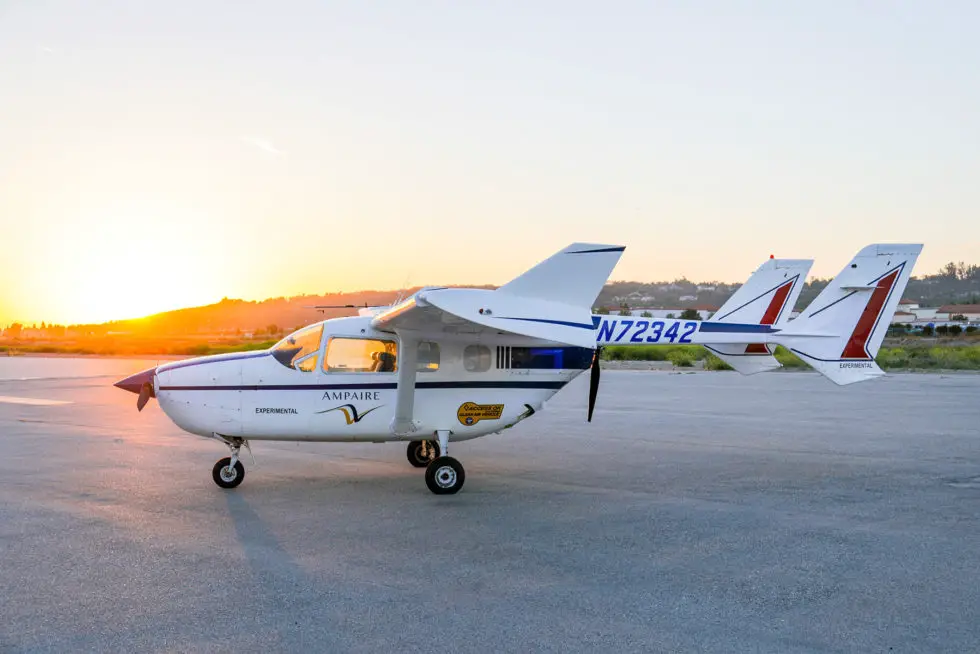
What Are the Potential Benefits of Electric Aircraft?
Electric aircraft have become an exciting topic of discussion in the aviation industry due to their potential to revolutionize air travel. The benefits that electric aircraft offer are numerous, ranging from reduced emissions to lower operating costs, quieter flights, increased energy efficiency, and new design possibilities. With these benefits, electric aircraft can shape the future of aviation.
In this article, we will explore the potential benefits, challenges, and future outlook for electric aircraft. We will discuss how electric aircraft can help address climate change, improve air quality, and reduce noise pollution. Additionally, we will explore the economic opportunities and job creation potential that electric aircraft present. We will also address frequently asked questions about electric aircraft, such as range limitations, charging infrastructure, and potential impacts on the aviation industry.
Reduced Emissions
Electric aircraft have the potential to significantly reduce emissions compared to traditional aircraft. By eliminating the need for fossil fuels, electric aircraft produce zero direct emissions. This can help address climate change and improve air quality.
“Electric planes are a good fit for short-haul flights and could represent 7% of the world’s commercial aircraft fleet and save 16.4 billion gallons of jet fuel annually by 2050.”
Lower Operating Costs
Electric aircraft have the potential to greatly reduce operating costs for airlines. The initial investment in electric aircraft may be higher than traditional aircraft, but the long-term benefits can outweigh the upfront costs.
One major advantage of electric aircraft is their lower fuel costs. Electric propulsion systems are significantly more efficient than traditional combustion engines, converting a higher percentage of energy from the battery into thrust. This can result in substantial fuel savings over the lifespan of the aircraft.
Electric aircraft also require less maintenance compared to traditional aircraft. The simpler design of electric propulsion systems means that there are fewer parts to maintain and inspect. This can lead to lower maintenance costs and reduced downtime for the aircraft.
Overall, the lower operating costs of electric aircraft can result in significant cost savings for airlines. While the infrastructure and technology for electric aircraft is still developing, the potential for long-term savings can make the investment worthwhile.
Quieter Flights
Additionally, electric aircraft have the potential to reduce noise pollution, which is another benefit for both the environment and local communities. The electric propulsion systems produce less noise compared to combustion engines, resulting in quieter flights, and providing a more pleasant flying experience for passengers. In addition to this, quieter flights have the potential to reduce noise pollution around airports, which is a significant benefit for local communities.
According to a report by the European Environment Agency, “the noise emissions of electric aircraft are up to 40 dB(A) lower than those of conventional aircraft, thus reducing the impact on people living near airports”.
Reducing noise pollution is a critical issue, as it can have adverse effects on human health and the environment. Noise pollution can cause hearing loss, high blood pressure, and sleep disturbance. In addition, it can impact wildlife and contribute to climate change.
The reduction in noise pollution provided by electric aircraft has several advantages. Quieter flights may lead to:
- Improved quality of life for local communities near airports
- Reduction in the number of noise complaints filed against airports
- Lower stress levels for passengers and flight crew
- Improved communication among flight crew and passengers
Potential for New Design Possibilities
One of the unique characteristics of electric aircraft is that they present new design possibilities. The absence of combustion engines allows for greater flexibility in aircraft design, leading to improved aerodynamics, increased payload capacity, and enhanced overall performance.
A potential design possibility for electric aircraft is distributed propulsion systems. These systems distribute the power from the electric motors to multiple propellers, improving power efficiency and redundancy. This can increase safety during flight and potentially reduce maintenance costs.
Another possibility is the integration of advanced materials and composites for weight reduction. Electric aircraft have the potential to utilize lightweight materials that were previously unavailable due to the heat generated by combustion engines. This can result in increased range and improved fuel efficiency.
Electric aircraft also offer the potential for new configurations, such as the vertical takeoff and landing (VTOL) design. This configuration allows for more efficient use of urban airspace and can potentially reduce congestion at airports.
Overall, the unique characteristics of electric aircraft open up exciting new design possibilities that could revolutionize the aviation industry.
Economic Opportunities and Job Creation
The introduction of electric aircraft presents numerous economic opportunities and has the potential to create new jobs.
The development, manufacturing, and maintenance of electric aircraft systems can drive innovation and create new job opportunities. The transition to electric aircraft can open up new markets and industries, such as battery technology and renewable energy.
According to a report by the Air Transport Action Group, the adoption of electric and hybrid-electric aircraft could create up to 100,000 new jobs by 2025.
Additionally, the use of electric aircraft can lead to cost savings for airlines, which can then be passed on to customers in the form of reduced fares.
Furthermore, the development and expansion of charging infrastructure for electric aircraft can also create new job opportunities in construction and engineering.
Infrastructure Challenges
Despite the potential benefits, the widespread adoption of electric aircraft faces significant infrastructure challenges. The current infrastructure for charging and supporting electric aircraft is limited and would require significant investment and development. This includes establishing charging stations, upgrading electrical grids, and ensuring sufficient battery capacity for long-haul flights.
One of the main challenges for electric aircraft is the development of robust charging infrastructure. Currently, most charging stations are designed for electric cars and trucks, which require significantly less power than electric aircraft. To support electric aircraft, charging stations need to be designed with higher power outputs, capable of charging large batteries quickly. Additionally, airports will need to install charging stations in strategic locations to avoid long wait times for charging.
Another challenge is upgrading the electrical grid to handle the increased demand for electricity. Electric aircraft require high levels of electrical power, and charging multiple aircraft at once could place significant strain on the electrical grid. Upgrades to the electrical grid will be necessary to ensure that sufficient power is available to support electric aircraft operations.
Finally, long-haul electric flights will require significant advances in battery technology. The current battery technology is not sufficient for flights lasting more than a few hours. Battery technology will need to improve to support long-haul flights and reduce the weight of the batteries. This will require significant investment in research and development to bring this technology to fruition.
Regulatory Considerations
The introduction of electric aircraft will require significant regulatory considerations to ensure their safe operation. As electric aircraft differ significantly from traditional aircraft, new safety standards and certification processes will need to be developed.
For instance, the Federal Aviation Administration (FAA) in the United States, and other regulatory bodies, will have to develop specific guidelines for ensuring battery safety, as this is a crucial component of electric aircraft. In addition, as electric aircraft operate on different principles than traditional aircraft, airspace regulations and integration with existing air traffic management systems will need to be addressed.
As there will be a transition period between traditional and electric aircraft, regulations will have to account for this difference. For instance, during the transition period, electric aircraft might have to operate in a dedicated airspace to avoid potential issues with other aircraft.
FAQ
Here are some frequently asked questions about electric aircraft:
What is the range of electric aircraft?
The range of electric aircraft varies depending on factors such as battery capacity and aircraft size. Currently, most electric aircraft are designed for short-haul flights, with a range of around 100-200 miles. However, research and development in battery technology is ongoing, and we may see longer range electric aircraft in the future.
How long does it take to charge an electric aircraft?
The charging time for electric aircraft depends on the size of the battery and the charging infrastructure. Currently, it can take a few hours to fully charge an electric aircraft. However, rapid charging technology is being developed, which could significantly reduce charging times in the future.
What type of batteries are used in electric aircraft?
Most electric aircraft use lithium-ion batteries, similar to those used in electric cars. These batteries are lightweight and have a high energy density, making them ideal for aviation applications. However, other types of batteries, such as solid-state batteries, are also being developed for use in electric aircraft.
What are the potential impacts of electric aircraft on the aviation industry?
Electric aircraft have the potential to disrupt the aviation industry by enabling new types of aircraft and reducing operating costs. This could lead to increased competition and potentially lower ticket prices for passengers. However, widespread adoption of electric aircraft is still in the early stages, and it remains to be seen how the industry will be impacted in the long term.
What are the safety considerations for electric aircraft?
Electric aircraft present unique safety considerations due to the high voltage and potential fire hazards associated with batteries. New safety standards and certification processes will need to be developed to ensure the safe operation of electric aircraft. Additionally, training and education for pilots and maintenance personnel will need to be updated to accommodate the unique characteristics of electric aircraft.
What are the current limitations of electric aircraft?
One of the main limitations of electric aircraft is their range, which is currently limited compared to traditional aircraft. Additionally, the infrastructure for charging and supporting electric aircraft is limited and would require significant investment and development. The upfront cost of electric aircraft is also higher than traditional aircraft, although lower operating costs over the lifespan of the aircraft can offset this initial cost.







